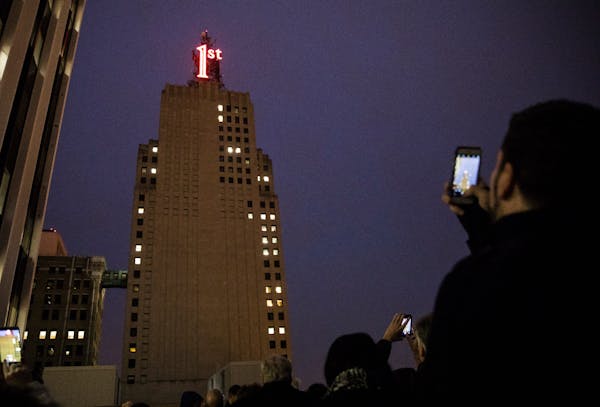Some of the historically safest neighborhoods in Minneapolis experienced the biggest increases in violent crime over the last year, according to an analysis of police statistics.
Residents of Nokomis — a community that encompasses the neighborhoods of Diamond Lake, Field and Minnehaha — saw violent crime rise more than 26 percent, from 72 incidents to 91, according to data through September, the last month for which information is available.
Police could not pinpoint a reason for the increases in violent crime in areas of south Minneapolis.
"We continue to add extra resources to the areas where we have seen this slight uptick in violent criminal activity," police spokesman John Elder said Monday.
Meanwhile, similar crime was down in the communities of Northeast and Near North Minneapolis, where police have intensified enforcement efforts.
"Our initiatives to increase firearms seizures from people not entitled to carry them has paid off and we certainly hope that has kept violent criminal activity increases to a minimum," Elder said.
Overall, the rate of violent crime in Minneapolis has risen slightly since last year. Through September, there have been 3,111 violent crimes reported — defined as murders, rapes, robberies and aggravated assaults — representing a 5 percent increase over the same period last year, the data shows.
The Powderhorn community saw a 19 percent jump, with 75 more incidents than last year. The community of about 10,000 residents recorded 71 more robberies so far this year compared to the same period in 2013. And while the number of aggravated assaults there fell slightly, rapes increased 29 percent, from 31 to 40.
Nokomis has experienced a rise in all four violent crime categories, most markedly in the number of rapes, which jumped from 31 through September of last year to 41 in 2014.
Violent crime rates spiked in pockets of south Minneapolis, but the overall numbers remain below other areas that have struggled with crime.
In Near North, which covers the Jordan and Hawthorne neighborhoods, violent crime fell somewhat, from 674 to 652 cases. But the area again logged the most homicides and aggravated assaults in the city.
The analysis was based on statistics different from those that police departments turn over to the FBI each year.
For example, in an incident in which a man broke into a woman's apartment, sexually assaulted her and stole her purse, the FBI would only count the more serious offense, the rape. This new data accounts for all three crimes and tracks incidents by the month in which they were reported, not necessarily when they occurred.
Police officials said that their efforts to tamp down violent crimes have been mostly successful, saying that overall crime is approaching 30-year lows, reflecting a national trend. Police say occasional increases are not unusual.
A 14.5 percent increase in aggravated assaults in downtown Minneapolis has contributed to the rise in violent incidents in the area. Downtown Minneapolis recorded 142 incidents so far this year, compared to 124 from January through September 2013.
"Every week we reassess where our criminal hot zones are and we continue to increase patrols and adjust shifts to combat these crimes," Elder said.
Elder said the department is installing more surveillance cameras and expanding the ShotSpotter tracking system. Police Chief Janeé Harteau has also pledged to replenish the force after a wave of retirements caused sudden and dramatic staffing challenges.
At a recent community forum on the North Side with Harteau and Mayor Betsy Hodges, several residents said they feared for their safety while running errands in their neighborhoods.
Princess Titus, an activist who began speaking out after her son was gunned down four years ago, called for increased police presence in her neighborhood.
Titus said Monday that she has grown accustomed to the sight of youths congregating outside late into the night, which, she said, is potentially a recipe for trouble.
Libor Jany • 612-673-4064 Twitter:@StribJany
Minnesota bankruptcy law firm files for bankruptcy after losing fight with another bankruptcy firm

Minnesota mother of 2 won $3.1 million Lotto America jackpot by playing family birthdates

St. Paul First National Bank building owner selling entire downtown portfolio

Wolves vs. Nuggets is set. Here's what we know about Round 2.

